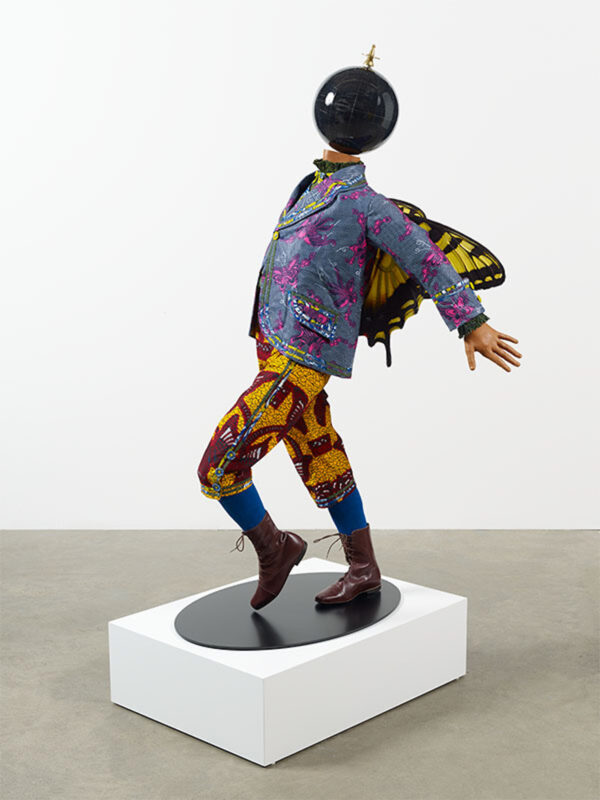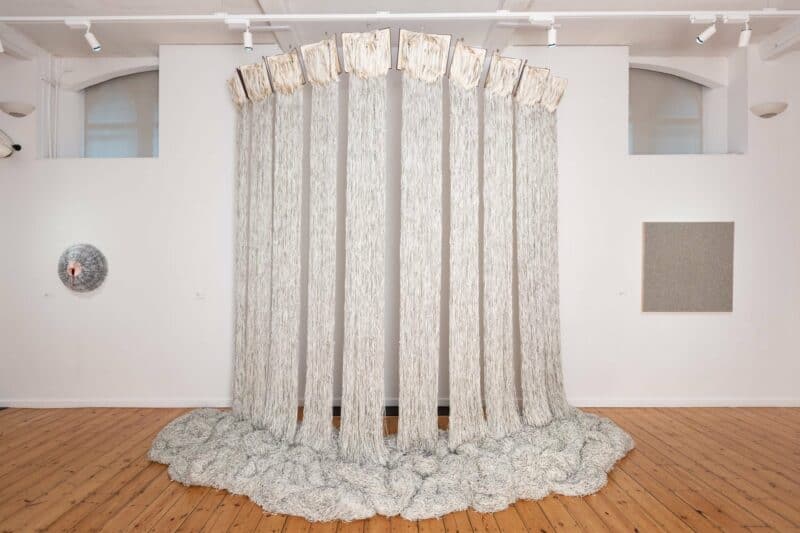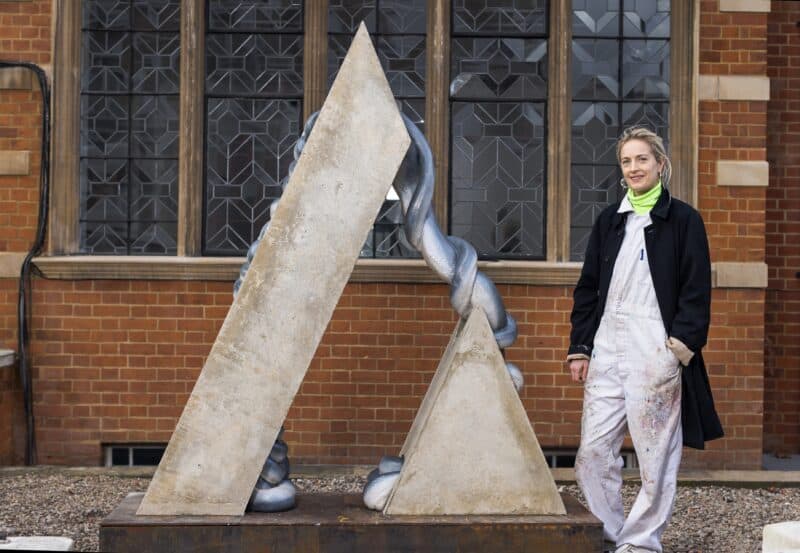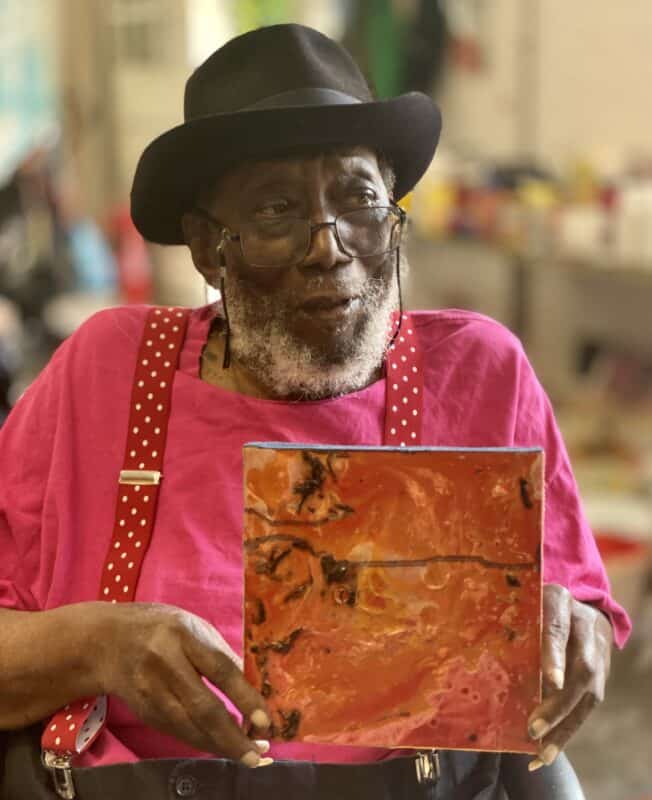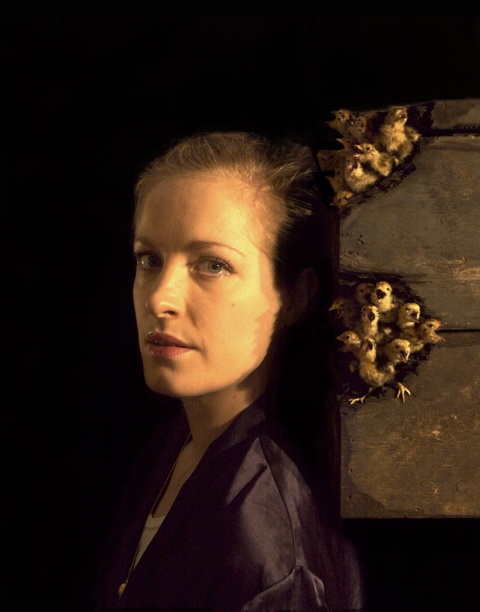


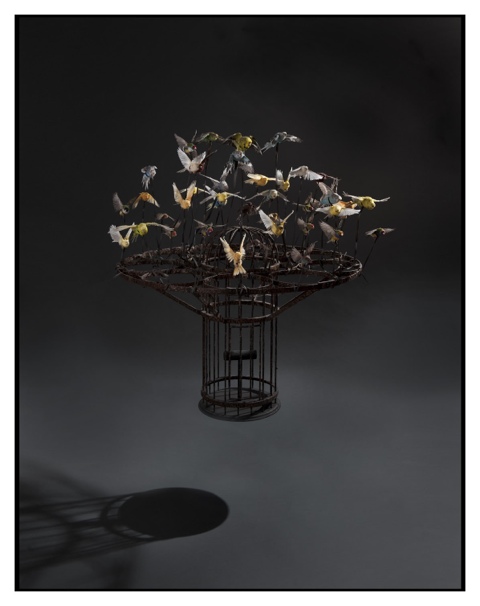
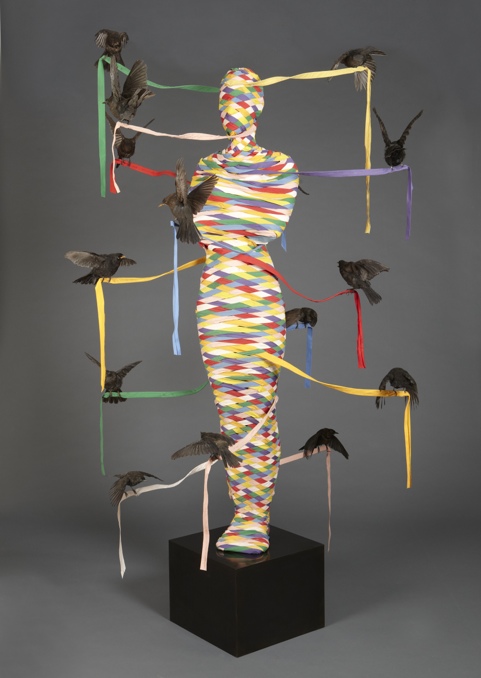
Polly Morgan is a British contemporary artist who works primarily with taxidermy. Polly Morgan lives and works in London, I have followed her career since the beginning when I was myself living in London. Her work has always strongly resonated with me for it is very powerful, eery and disturbing all at once. Her new solo show entitled “Endless Plains” is on in London at All Visual Arts from the 8th June to the 14th July I had the great honor to meet with her a few times recently in Paris, and she agreed to answer my questions for FAD.
V: Could you please describe your creative process:
PM: It has changed a bit in recent years. I think right at the beginning I used to be fairly determined by the animals I got given because my network to source animals wasn’t so broad.
I think I was also very excited at the beginning, quite inspired by each animal as I got them. I was inspired by the form of it which I think was a step I had to go through first and foremost.I hadn’t done taxidermy long, so each time I got a new creature I was just very excited by it, so my first few works were a result of that but that didn’t last that long.
Then when my work got got quite a lot of attention, I started to realize I had to do better than that and push myself further.
I thought I really had to plan the work, really think them through and not just be excited to just stuff the animals and have it there lying down/ I wanted to really conceptually push myself rather than keeping the work quite shallow.
So rather than just be about sheer aesthetic of it, I wanted it to become more conceptual.
As I was suddenly showing my work amongst those amazing artists, I thought I definitely needed to step up the mark a little.
And I did so by planning the work better, really think it through, research around the subject doing some sketches, and maquettes, and build up from there. I started to come up with more complicated ideas I suppose and ideas I live with for a while before I just execute them. I started to draw a lot more actually recently but that wasn’t something I did a lot of. I also create collages on photoshop.
I also go to see a 3D model maker who can do a whole show for you, the principle being you submit your ideas, the space you are using and dimension of the gallery etc…and he can put it all into a 3D program, so it is a great tool to know how to use the space but also to preview what you are making before you actually do it, so you can adjust, make changes if some elements don’t quite work, or you havent got the scale quite right…it is great help.
Once I did that I then began to spend a lot longer sourcing the right animals for the work and not just do with what I had.
V: What are the main challenges while executing your work?Are there limits to your ideas?PM: Absolutely yes, there can be, I had ideas about things I wanted to make ages ago, that I would still like to make. But I just can’t do it, as I just can’t find the right animal. Sometimes I am able to find ideas and then I realize it might as well work with something else, but not always…
Other times I just basically have to put it on hold really til I can get hold of the right thing.
But the other thing happening more recently is that I have been finding that I have also been limited by the fact that I am known for taxidermy and that’s always what I have done, and I started to realize that actually I was almost having ideas that didn’t involve animals, and I have started thinking “right how can i put an animal in that?”
V: I am glad to hear that as I was actually wondering if you did ever consider not using taxidermy in your work.Your works are strong amazing pieces. It’s always very powerful, striking in that it pushes the viewers to question the work. I have always thought of your work – and not just in recent years but right at the beginning – very conceptual actually. I have always felt that there was a recurring macabre element in your pieces but actually not so obviously because of the dead animals, but really when looking at the final piece as a whole. Indeed, all the components are placed together in such a way that conveys to me those uncomfortable yet very exciting feelings.
PM: I haven’t until recently, and for this show it has also involved animals but not taxidermy. I have in my freezer ashes from the animal crematorium, and I have used those ashes to draw. What I mean is, I draw blind as I’m using a pen with glue, so it’s completely transparent and it’s only when I scatter the ashes on top that the picture suddenly appear. So its taking a bit of practice to get good at that and that’s a new development.
And I have also been using casting in resin, rubber etc… For instance, despite involving taxidermy, the main piece from my new show is going to be a rotten tree that looks like its fallen and all the roots are sticking up in the air, and the trunk is lying along the ground, I have also used fiberglass and built it all up very realistically I didn’t do the tree actually, I got it fabricated as I work with the people who fabricate works for artists, they do all kind of things they are furniture makers etc…
They do a lot of castings, and they can work with any materials really, so if you don’t really know how to execute your ideas you can submit it to them and they will fabricate it. Though I never give the whole work to someone like that as I like to maintain control, and I don’t find you can do that if you let another person involved in the creative process.
I found the tree in Norfolk and chopped it up to bring it back to central London, and just put it all together again here, and made a mould out of it, so its a very life-like looking rotten tree…it’s split in the middle with all those phallic pink mushrooms growing off it, which are also being plucked up by birds and then underneath the trunk… ( A/N: at this point neither Polly nor myself can remember the word for this…) there are wooden knobbles (N/A: yes thats the best we came up with) on the stub of the branches looking like nipples, and they are being sucked on by piglets feeding off the tree and sap running down their chins as though they have drained it of life.
The castings of the piglets in rubber are actually more convincing than taxidermied pigs as those don’t come out so well due to the fact they don’t have enough covering and fur. So I have just been setting the glass eyes in those rubber piglets today.
The idea really is that piglets are kind of feasting on this tree and killing it in the meantime and the mushrooms growing out of the dead tree and feeding the birds.
Its all a kind of cycle of life really, particularly for this show I have been exploring the kind of pest and relationship between life, death and new lives.
Everything in the show is inspired by that but also by that trip I made last summer to Serengeti. I went on a safari there and I was just really struck by all the dead animals and the landscape , so there would be wildebeest lying there looking like they are taxidermied actually because they are really intact but when you get closer , you can see they are completely hollow out from the inside by vultures who have gone into their stomach and eaten all the flesh inside, just left the bones and skin intact, quite beautiful really.They have become some kind of cave.
Serengeti translates in English “Endless Plains”, the title of my show, and a particular piece that was inspired by this trip is a taxidermy stag, looking hollow out from the inside, and I have stretched the skin over the cast, so on the stomach there is an opening going into this cavernous looking ribcage.
Then inside the ribcage there will be hundreds of sleeping bats hanging upside down off the ribs and I have put a concealed mirror inside the stag so that it looks like the bats cave goes on forever…I like the idea of this kind of infestations, I didn’t want to be literal and use bugs or insects or butterflies that actually nest in that way, I wanted to use something a bit more conceptual
V: Why does the idea of infestation, nesting, death… fascinates you so much?
PM: I think it’s its potential really, it looks very still and yet the potential is enormous, there are those hundreds of lives just gestating there and I find there is something very sinister there but also very exciting and life affirming about it.
I love it in a positive way but at the same time there is something quite eery and quite disturbing about something that is so still but is soon going to be this incredible powerful force. What I like about the bats is that they could be real and about to launch flying out at you…There is real suspense to it I suppose and I think any creatures en masse become terrifying, just like those chicks I have used, chicks are notoriously those sweet little things you just want to pick up and cuddle, but when you get hundreds of them they become really frightening…just like groups of children really frighten me!
V: I agree with you, despite this morbid underlying tone to the pieces you describe, it also sounds very exciting and positive
PM:I like that dichotomy but actually there is nothing more positive about it as these are hundreds of lives forming or recuperating or whatever they might be doing. But also while I was looking at the picture of the chrysalis of a butterfly, it also reminded of the bats as they are quite similar looking. The chrysalis that they form is made to very much look like a leaf for obvious reasons, to protect them from predators, so they look like folded up leaves which looks almost identical to the shape of the bats wings when they fold it all together, and thats quite interesting because the bats are already living creatures…
V: Indeed, the cycle of life is a fascinating subject, because of its dynamic axed around life and death and its metamorphoses I just wanted to come back to taxidermy, as we know, it is as much an art form as it is a science, and I was wondering in your work, when does it become art?
PM: The way I look at it is very straightforward, yes it can be for scientific reason but I see it as a scientific thing when it is used as a study guide and thats how it started out really, just to show people what these creatures looked like. It was used to educate people about what existed and what they couldn’t get access to.
And when that became no longer necessary, as museums were already full of stuffed animals, and television and photographs came along, you could actually look at it in lots of different ways. I think it then developed more into a craft, with people mimicking the habitats the animals were from, really creating a sort of three dimensional photograph, almost taking something from the wild to bring it in the homes to enjoy.
Whereas I feel like it becomes art as soon as you try to make something unique and original, when you are doing something that breaks away from that tradition.
I guess to the untrained eye if you were looking at tens or dozens of cabinets of various taxidermists work, you would not probably be able to tell one from another because they would generally aim to display them the same way. So I think it is art when breaking away from mimicking the habitat.
V: You are right and I think somehow it is very similar to the tradition in the 16th century for artists to draw the human body, what we call in French “l’écorché” a painted or drawn representation of the human anatomy inside and outside. The artists would be the ones to represent and show the world what he peoples did not have access to, and also use those drawings for scientific research of course. So There is always been a strong link between science and art.
PM: yes there is and I think people are more willing to call those original portraits “art”, than they would be for taxidermy.
Im not too sure why that is, I think people have more of a traditional respect for it. People don’t realize how much art that goes into it, and I certainly didn’t know it myself until I had to do it.
But taxidermy is actually like making an entire sculpture and the only things that are left of the original animal is really the skin, the feathers or the furs… most people i speak to think that the body is still inside there and i have managed to preserve the body in some ways, that I have injected it with form XXX or something.
A lot of people assume that the eyes are the original eyes rather than glass eyes. So I think when taxidermy is done well, it’s done so well that people have no idea how much work goes into it, but you are almost building the animal from scratch .
The bones aren’t even that useful, the most useful I find are the skulls in a bird as you have the beak attached to it, so it provides a great structure to build the work.
With mammals you very often build a new one because there is so much flesh on the original skull that you have to strip off most of it and by that time it has lost most of its shape.
So really you work with a saggy bag of skin with feathers and you have to rearrange everything ensuring it is all at the right place, that the body you are building is anatomically as correct as can be.
I suppose with painting and drawing you can see and visualize the work that has gone into it, with taxidermy it is all a trick, you can’t see any of it because the skin is hiding all the work underneath…
V: As well as that I think there is also an element of unknown for the public, it is very intriguing and a scary process to many, exactly because of the point you made, most people don’t know what the process of taxidermy entails…
PM:… and that’s when the line with science becomes blur, when people presume it is about preserving the body, when it is not that at all, since you have thrown the body away.
And having said that you can’t have any sentimental attachment to the animal, I make a clear division between my pets and the animals I use for my work
V: As a last question, I would like to know if there are any artists you would like to collaborate with?
PM: I am really a bad collaborator, I have never had that desire to collaborate; obviously there are artists that I love but not to collaborate with. I suppose because I would be wanting to steal something from them really, so it would be more like me trying to ride on their limelight a bit.
And if someone wants to collaborate with me, I would be worried that they would be thinking the same thing!
That sounds terrible !!
I just think I am a bit of a control freak, there are lots of artists I admire but I just don’t think I could improve on them, I think they are doing great things without me, and I would worry I would mess it all up.
Actually Mat (Collishaw) and I have talked about this one work that I would quite like to make with him, which I think would be amazing.
He has made these old fashioned victorian animations called “zoetrope”, they are basically 3 dimensional flip books, so you have a theme, say a bird flying, and a model of that bird flying in 18 different directions, portraying the whole cycle of flight stage by stage, and you put these models on a wheel, and the wheel spins around and a stroblight goes on, and it suddenly looks like you have got this thing flying inside….
I would love to do one where I taxidermy the same type of bird 18 times, and we d put the birds all a round this wheel and it would actually look like a real bird flying
in front of you.
But I have to find 18 birds of the same species, and they have to be quite small birds otherwise it makes the piece way too big.
V: Thanks for your time Polly, I look forward to seeing your show.
Polly Morgan “Endless Plains” is on at All Visual Arts from the 8th June to the 14th July
pollymorgan.co.uk/

